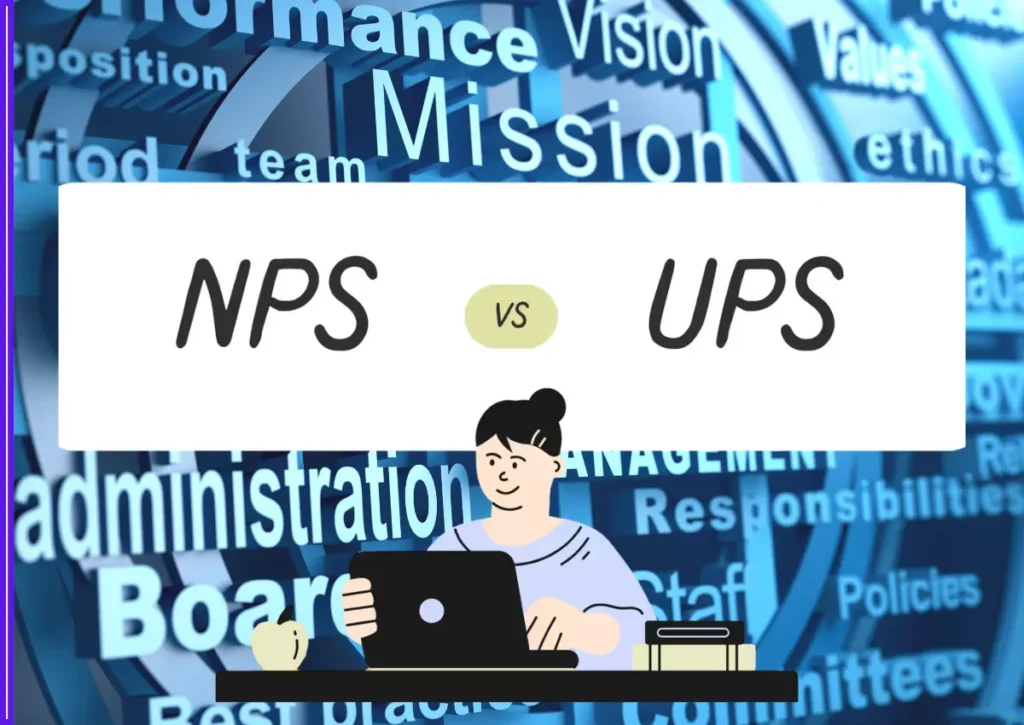In India’s evolving retirement landscape, government employees often face a critical choice between two primary pension systems — the Unfunded Pension Scheme (UPS) and the National Pension System (NPS). This decision can deeply influence their post-retirement life, financial security, and peace of mind. Although NPS is marketed as a forward-looking, market-linked, and “modern” system, a growing number of employees, unions, and economists argue that going with the old pension system (UPS) may, in fact, be the wiser choice — especially for those in public service.
Let’s understand both systems in detail, compare their implications, and explore why UPS continues to attract strong support from government employees.

What is UPS (Unfunded Pension Scheme)?
The UPS, often referred to as the Old Pension Scheme (OPS), is a government-funded, defined-benefit pension model. It guarantees a fixed pension amount after retirement, calculated as 50% of the last drawn basic salary plus applicable dearness allowance (DA). Introduced before 2004, UPS assured lifetime income to retired employees, with full inflation adjustment through DA revisions. Crucially, employees under this scheme did not contribute any portion of their salary towards the pension corpus — the entire burden was borne by the government.
This meant that a retired government servant could expect a predictable and steady monthly pension, immune to market fluctuations, and with DA-linked revisions twice a year.
What is NPS (National Pension System)?
The NPS was introduced in January 2004 for all new entrants into central government service (except the Armed Forces) and later adopted by many state governments. It is a defined-contribution, market-linked retirement plan. Both employee and employer contribute 10% and 14% of the basic pay plus DA respectively into a pension corpus, which is managed by private and public fund managers. Upon retirement, the employee can withdraw 60% of the accumulated fund, while 40% must be mandatorily used to purchase an annuity plan from a pension provider to ensure post-retirement monthly income.
The monthly pension in NPS depends entirely on market returns, annuity rates, and inflation — making it far less predictable than UPS.
Key Differences Between UPS and NPS
- Pension Guarantee
- UPS: Fixed, guaranteed monthly pension (50% of last drawn basic pay + DA).
- NPS: No guaranteed pension. Income depends on corpus accumulation, investment performance, and annuity terms.
- Employee Contribution
- UPS: No contribution from the employee.
- NPS: Employee contributes 10% of basic + DA; employer adds 14%.
- Market Dependency
- UPS: Not linked to the stock market.
- NPS: Market-linked; returns can vary depending on equity and bond market performance.
- Inflation Adjustment
- UPS: Dearness allowance is adjusted biannually, offering protection from inflation.
- NPS: No formal DA adjustment; depends on annuity provider’s plan, which often lacks inflation-indexing.
- Survivor Benefits
- UPS: Family pension is available to spouse/nominee after the employee’s death.
- NPS: Survivors may receive remaining corpus, but monthly pension is not guaranteed or defined.
Why UPS May Be Wiser for Government Employees
- Financial Predictability in Old Age Retirement planning is, above all, about income security. With UPS, a retired government employee knows precisely how much he or she will receive every month. In contrast, NPS leaves retirees at the mercy of volatile markets and unpredictable annuity rates, often resulting in lower and stagnant pensions. For example, a government employee retiring under UPS with a last basic salary of ₹90,000 would typically receive a monthly pension of ₹45,000–₹50,000, plus DA. In contrast, under NPS, even with a ₹1 crore corpus, the monthly pension through an annuity plan may barely touch ₹40,000 — and often with no inflation protection.
- Rising Life Expectancy and Longevity Risks Indian life expectancy has steadily increased. A pensioner could easily live 25–30 years post-retirement. With NPS, this longevity risk is transferred to the individual — who must make sure their corpus lasts that long. UPS eliminates this concern by providing a lifelong pension backed by the government.
- Inflation Protection through DA One of the strongest arguments in favor of UPS is its linkage to inflation through DA adjustments. Retired employees continue to receive revised DA at the same rate as serving employees, ensuring their income remains relevant in a high-inflation economy. NPS offers no such adjustment, and most annuity providers do not offer inflation-indexed pensions.
- No Exposure to Market Uncertainty Stock markets, interest rates, bond yields — all are out of an individual’s control. Under NPS, a bear market in the years before retirement could wipe out years of contributions. UPS, being a sovereign-guaranteed scheme, is immune to market risks. This makes it particularly important for employees with limited financial literacy or risk tolerance.
- Social Security, Not Investment Product UPS is based on the principle of social security. It acknowledges that public servants devote decades to serving the state and deserve a dignified, assured retirement. NPS, on the other hand, functions like an investment product — where the risk is borne by the worker. This shift from social obligation to financial product is seen by many as unjust, especially for lower-income or rural employees.
- Survivor and Family Pension Stability UPS guarantees family pension to the spouse and dependents of a deceased employee or pensioner, usually at 50% of the original pension. In NPS, while the legal nominee can claim the accumulated corpus, the monthly pension ends. This makes UPS a more humane system in terms of survivor support.
- Legal and Political Support for Reversion to UPS Growing dissatisfaction with NPS has led to a surge in demand for reinstating UPS. Several states — including Rajasthan, Chhattisgarh, Himachal Pradesh, Punjab, and Jharkhand — have already announced re-adoption of the old pension scheme for their employees. Central government employees’ unions are also campaigning vigorously to restore UPS. This political shift indicates that UPS is not only viable but potentially returning as a mainstream option.
- Administrative Simplicity NPS requires employees to choose fund managers, asset allocations, annuity providers, etc. This complexity often results in suboptimal decisions, especially among employees in rural or non-technical roles. UPS offers a simple, government-managed system where employees need not worry about market strategy or financial products.
Counterarguments in Favor of NPS
Of course, NPS does have its advantages, especially when viewed from a government or policy-maker perspective:
- Reduced Fiscal Burden: UPS creates long-term pension liabilities for governments. NPS shifts that responsibility to individual accounts, making public finance more predictable.
- Portability and Transparency: NPS accounts are accessible online, portable across jobs, and regulated by PFRDA.
- Market-linked Growth: In bullish markets, NPS can offer higher returns than expected.
- Flexibility: Employees can make voluntary contributions and choose from multiple investment options.
However, these benefits often don’t outweigh the retirement insecurity and unpredictability that NPS imposes on the average government employee — especially those outside elite administrative roles.
The Bottom Line: Retirement Should Not Be a Gamble
For government employees, especially those who serve for decades in education, policing, rural health, clerical services, or field operations, retirement is not about growing wealth — it’s about stability, dignity, and certainty.
UPS delivers exactly that: a fixed, inflation-protected pension for life, backed by the state. It recognizes the lifelong contribution of public servants and ensures they are not left vulnerable to financial shocks in old age.
NPS, despite being modern and efficient on paper, turns retirement into a financial puzzle. It demands investment literacy, market timing, and tolerance for risk — all of which are unrealistic expectations for many employees.
In conclusion, while NPS may suit the government’s books and benefit a few financially savvy individuals, the Unfunded Pension Scheme — with its assured returns, inflation adjustment, and social security principles — remains the more sensible and compassionate choice for the majority of India’s government workforce.









